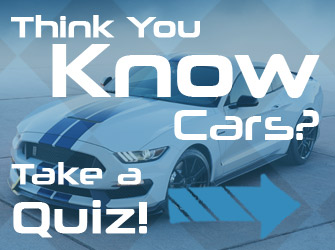2013 Fiat Ducato Cargo Van Review & Road Test
This isn’t a review of the 2014 RAM ProMaster, but the Ducato gives us a good idea of what that full-size front wheel drive van will be like when it arrives in late 2013. The American commercial market is very different from most of the world. In America, our vans are based on pickup trucks, usually a generation (or two or three) behind the consumer product. The benefit is a stable platform that’s been tested. The downsides are: a large and heavy ladder frame undercarriage causing a high center of gravity, thirsty V8 engines, old 4-speed automatics, engines located under a “dog house” between the front seats, poor fuel economy and a general lack of innovation. Even the newcomer to this segment, the Nissan NV, follows the same formula with a chassis and drivetrain very loosely based on the Titan. In Europe things are different. Even if manufacturers had large trucks to base vans on, fuel economy is a huge deal. Because of this Europe is a sea of large unibody vans sporting small diesel engines, manual transmissions and [comparatively] aerodynamic shapes. How small? The Ford Transit sports a 100HP 2.2L diesel and a 6-speed manual. In America the only diesel cargo van on sale at the moment is the Chevy Express with a massive 6.6L V8 engine. The Ducato had no problems maintaining highway speeds on mountain roadways with a full payload. The four-cylinder diesel is also quieter and more refined than you might expect and the fuel economy is nothing short of amazing. Over 850 miles the Ducato averaged 29.6 imperial MPG which translates to 24.6 US MPG. Keep in mind the Ducato had 3,300lbs of cargo in the back and the van climbed from sea-level to 2,200 feet every trip. These are impressive numbers. Based on local gasoline and diesel prices of 3.99 and 4.10 per gallon respectively, the pay back time for the diesel’s expected $4,000 premium would be just over 2 years at 20,000 miles a year. That’s without factoring in the increased reliability of a diesel engine, longer transmission fluid lifetime in the robotic unit and lengthy engine oil replacement cycles. Although not normally a consideration with a cargo van, the Ducato the most civilized ride in this segment. It’s also the easiest to parallel park thanks to an incredibly small 36.3-foot turning circle in the short wheelbase model, smaller than many mid-size sedans. The largest Ducato carries nearly twice the cargo as Chevy’s extended express while being more maneuverable with a 46.8 foot turning circle compared to the 54.6 for the Express. That’s the difference between making a U-turn or a 3-point turn downtown. Driving the Ducato gave us the best insight so far into the upcoming ProMaster, a van that redefines American cargo hauling. Whether or not the ProMaster will be a success remains to be seen. In this notoriously stagnant market, the Ducato’s (and therefore the ProMaster) biggest feature is that robotic manual and the resulting fuel economy. But will fleet buyers accept the inherent compromises? Although Ford has delayed the highly anticipated T-Series, we can’t discount its impact on this segment. Part of that has to do with Ford’s sales domination, but plenty has to do with the T-Series itself. With a broader range of options, a RWD chassis that fleet buyers are comfortable with, a twin-turbo V6 and their 3.2L diesel 5-cylinder diesel the T-Series covers all the Ducato’s bases except for that low load floor and possibly fuel economy. Even so the Ducato is an interesting and attractive alternative, especially to those old GM vans.
If you enjoyed this “2013 Fiat Ducato Cargo Van Review & Road Test” video then make sure to Like this page, share and leave a comment below!






